Reviews: Read What Gregg Webb Is Saying
1 ★★★★★ reviews
Legerdemain Explained
Overall customer rating: ★★★★★reviewed by Gregg Webb (confirmed purchase)
Rating: ★★★★★ (Date Added: Saturday 10 January, 2026)
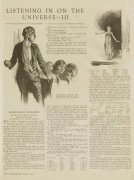 At that price, it was worth it, and the illustrations are great, but it isn't about Legerdemain; it is about a 2-person code for mentalists.
At that price, it was worth it, and the illustrations are great, but it isn't about Legerdemain; it is about a 2-person code for mentalists.
Tricks not Spirits
Overall customer rating: ★★★★★reviewed by Gregg Webb (confirmed purchase)
Rating: ★★★★★ (Date Added: Tuesday 02 December, 2025)
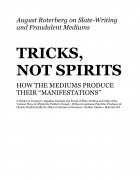 I actually liked a different book better, that is on the same subject. An Exposure of Mediums' Tricks and Rackets by C. Samuel Campbell is a book I really liked, and this one I feel was holding back a lot.
I actually liked a different book better, that is on the same subject. An Exposure of Mediums' Tricks and Rackets by C. Samuel Campbell is a book I really liked, and this one I feel was holding back a lot.
Equirock
Overall customer rating: ★★★★★reviewed by Gregg Webb (confirmed purchase)
Rating: ★★★★★ (Date Added: Tuesday 02 December, 2025)
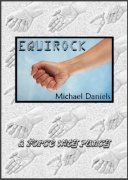 I love this routine. I'm a fan of Michael Daniels' ideas, and he hasn't let me down with this one. I'll include it in my any time - any where...category of feats that are really practical. It isn't new, but I didn't have it, so it is new to me.
I love this routine. I'm a fan of Michael Daniels' ideas, and he hasn't let me down with this one. I'll include it in my any time - any where...category of feats that are really practical. It isn't new, but I didn't have it, so it is new to me.
The Modern Conjurer
Overall customer rating: ★★★★★reviewed by Gregg Webb (confirmed purchase)
Rating: ★★★★★ (Date Added: Tuesday 25 November, 2025)
 I had this book many years ago and sold it at a convention when I was in college and needed money. So nice I can get this download and revisit this wonderful book.
I had this book many years ago and sold it at a convention when I was in college and needed money. So nice I can get this download and revisit this wonderful book.
The Close-Up Magic of Aldo Colombini
Overall customer rating: ★★★★★reviewed by Gregg Webb (confirmed purchase)
Rating: ★★★★★ (Date Added: Saturday 22 November, 2025)
 I've always loved everything I ever got of Aldo Colombini's and this book is no exception. Actually this is one of his earliest books. I think it was the first in America, but I never had it till now. Another bonus is the intro was written by Bob Elliott, who I knew well, back when. A huge amount of great material is here for your enjoyment.
I've always loved everything I ever got of Aldo Colombini's and this book is no exception. Actually this is one of his earliest books. I think it was the first in America, but I never had it till now. Another bonus is the intro was written by Bob Elliott, who I knew well, back when. A huge amount of great material is here for your enjoyment.
The Systematic Seer
Overall customer rating: ★★★★★reviewed by Gregg Webb (confirmed purchase)
Rating: ★★★★★ (Date Added: Sunday 19 October, 2025)
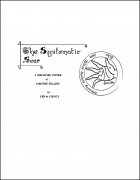 This is one of the best ways to add more keywords to your readings for people, and you won't be at a loss groping for where to start or thinking of the perfect words to use. This is another book you can keep returning to to improve your readings.
This is one of the best ways to add more keywords to your readings for people, and you won't be at a loss groping for where to start or thinking of the perfect words to use. This is another book you can keep returning to to improve your readings.
More Mind Magic
Overall customer rating: ★★★★★reviewed by Gregg Webb (confirmed purchase)
Rating: ★★★★★ (Date Added: Sunday 19 October, 2025)
 Michael Daniels consistently comes up with terrific stuff. There is a lot to like here. I'm retired, but still like to read good books. You'll keep coming back to this, I think.
Michael Daniels consistently comes up with terrific stuff. There is a lot to like here. I'm retired, but still like to read good books. You'll keep coming back to this, I think.
Mind Divination
Overall customer rating: ★★★★★reviewed by Gregg Webb (confirmed purchase)
Rating: ★★★★★ (Date Added: Sunday 19 October, 2025)
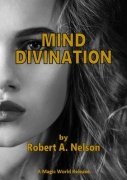 Bob Nelson's books are terrific. Although there are some new trends in mentalism, making this somewhat "old school", nevertheless it adds to your overall understanding of this category of feat.
Bob Nelson's books are terrific. Although there are some new trends in mentalism, making this somewhat "old school", nevertheless it adds to your overall understanding of this category of feat.
Scripted #4: The 21 Card Trick
Overall customer rating: ★★★★★reviewed by Gregg Webb (confirmed purchase)
Rating: ★★★★★ (Date Added: Sunday 19 October, 2025)
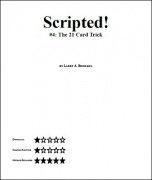 Most people know the trick, which is still a good trick. Larry added a script with some gags you might want to use and some you might not. What I think helps the trick is the addition of some moves during the process, and the use of some coins as markers, which adds a gambling theme. The ending gag is offbeat and probably useful. You might rewrite the script after seeing how it helps elevate the trick. You don't have to use his gags, which are personal. Having an ending helps.
Most people know the trick, which is still a good trick. Larry added a script with some gags you might want to use and some you might not. What I think helps the trick is the addition of some moves during the process, and the use of some coins as markers, which adds a gambling theme. The ending gag is offbeat and probably useful. You might rewrite the script after seeing how it helps elevate the trick. You don't have to use his gags, which are personal. Having an ending helps.
An Exposure of Mediums' Tricks and Rackets
Overall customer rating: ★★★★★reviewed by Gregg Webb (confirmed purchase)
Rating: ★★★★★ (Date Added: Tuesday 19 August, 2025)
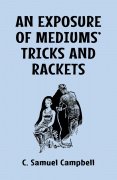 One of the big schools for magic in Las Vegas has added a seance room because there is a comeback of seances going on, seemingly. This book from the 30's is a terrific read and has the bonus of being illustrated by Nelson Hahne, albeit uncredited, who is probably my favorite magic illustrator. This is a great little re-release of a Nelson Enterprises book.
One of the big schools for magic in Las Vegas has added a seance room because there is a comeback of seances going on, seemingly. This book from the 30's is a terrific read and has the bonus of being illustrated by Nelson Hahne, albeit uncredited, who is probably my favorite magic illustrator. This is a great little re-release of a Nelson Enterprises book.
The Complete Gypsy Switch Handbook
Overall customer rating: ★★★★★reviewed by Gregg Webb (confirmed purchase)
Rating: ★★★★★ (Date Added: Monday 04 August, 2025)
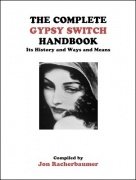 The Gypsy Switch lends itself to a lot of variety as per the objects used and the effects possible and the stories that can be told along with these. The supposed origin of this technique was used in a way that played the locals for suckers. You (probably) won't use it in that way, but you can learn from it and tell about it in your story that you can tell about the routines in this book, or just keep it clean and use it for a great magic show piece.
The Gypsy Switch lends itself to a lot of variety as per the objects used and the effects possible and the stories that can be told along with these. The supposed origin of this technique was used in a way that played the locals for suckers. You (probably) won't use it in that way, but you can learn from it and tell about it in your story that you can tell about the routines in this book, or just keep it clean and use it for a great magic show piece.
The L. W. Mental and Spirit Mysteries
Overall customer rating: ★★★★★reviewed by Gregg Webb (confirmed purchase)
Rating: ★★★★★ (Date Added: Thursday 03 July, 2025)
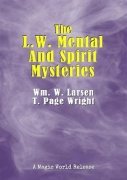 I love these guys! I love this period of writing and inventing. I can't get the full T. Page Wright manuscript at the moment but this way I can get some of his thought process into my daily study.
I love these guys! I love this period of writing and inventing. I can't get the full T. Page Wright manuscript at the moment but this way I can get some of his thought process into my daily study.
The L. W. Mindreading Mysteries
Overall customer rating: ★★★★★reviewed by Gregg Webb (confirmed purchase)
Rating: ★★★★★ (Date Added: Sunday 22 June, 2025)
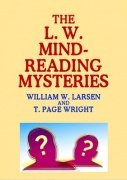 When I first heard of these gentlemen, I was only interested in 4-Ace Tricks. That was a long time ago. Since then, I have developed a respect for mentalism and I would say that I like the works by these men and their minds, and an interest in the writings of this period in mystical entertainment. I am enjoying this book again and again. I admit to being retired, but I read and also write about things magical, and if I had to do over, I'd use this material for sure.
When I first heard of these gentlemen, I was only interested in 4-Ace Tricks. That was a long time ago. Since then, I have developed a respect for mentalism and I would say that I like the works by these men and their minds, and an interest in the writings of this period in mystical entertainment. I am enjoying this book again and again. I admit to being retired, but I read and also write about things magical, and if I had to do over, I'd use this material for sure.
Expert Card Technique
Overall customer rating: ★★★★★reviewed by Gregg Webb (confirmed purchase)
Rating: ★★★★★ (Date Added: Sunday 18 May, 2025)
 Truly one of the great books on cards. It has stood the test of time and there have been so many other texts published in the meantime while this one is still selling. The price for it as an eBook is amazing, and within the budget of students everywhere. I am a professional and a hobbyist at the same time, lucky for me. It is about half a century since I read it the first time, and many years since I read it the last time. We get caught up with keeping up with what's new, and yet now that I'm re-reading it again, it seems new again and I'm re-learning things I forgot I knew.
Truly one of the great books on cards. It has stood the test of time and there have been so many other texts published in the meantime while this one is still selling. The price for it as an eBook is amazing, and within the budget of students everywhere. I am a professional and a hobbyist at the same time, lucky for me. It is about half a century since I read it the first time, and many years since I read it the last time. We get caught up with keeping up with what's new, and yet now that I'm re-reading it again, it seems new again and I'm re-learning things I forgot I knew.
Principles and Deceptions
Overall customer rating: ★★★★★reviewed by Gregg Webb
Rating: ★★★★★ (Date Added: Thursday 08 May, 2025)
 I recently read a short review of this great book, and revisited it. I read it several times long ago, but this time through I felt compelled to mention how good it really is. I performed professionally for about 16 years, but on and off many more. Even when not performing, I am involved with writing about the art. The main reason I've taken a new interest is the inclusion of billiard ball magic explained in a wonderful way. While the other items are covered with interesting writings, the work on billiard balls interested me the most because it is probably my favorite branch of magic. While I often mention Gaultier and Hull in regard to B. Balls, I must remember to include this book in the group to study if fascinated by this field. The price is surprisingly low in this downloadable version.
I recently read a short review of this great book, and revisited it. I read it several times long ago, but this time through I felt compelled to mention how good it really is. I performed professionally for about 16 years, but on and off many more. Even when not performing, I am involved with writing about the art. The main reason I've taken a new interest is the inclusion of billiard ball magic explained in a wonderful way. While the other items are covered with interesting writings, the work on billiard balls interested me the most because it is probably my favorite branch of magic. While I often mention Gaultier and Hull in regard to B. Balls, I must remember to include this book in the group to study if fascinated by this field. The price is surprisingly low in this downloadable version.
Wayne Dobson: The Definitive Collection
Overall customer rating: ★★★★★reviewed by Gregg Webb
Rating: ★★★★★ (Date Added: Thursday 13 March, 2025)
 A friend loaned me this book to read, and I'd like to say that it is one of the best magic books I've ever read. Before his unfortunate handicap, he was a working pro, so he knew what worked in the real world, and he had the knack of making something catchy and his patter ideas were perfect. I highly recommend it to anyone interested in magic as one of the only books you need to own and study. Gregg Webb
A friend loaned me this book to read, and I'd like to say that it is one of the best magic books I've ever read. Before his unfortunate handicap, he was a working pro, so he knew what worked in the real world, and he had the knack of making something catchy and his patter ideas were perfect. I highly recommend it to anyone interested in magic as one of the only books you need to own and study. Gregg Webb
Jinx
Overall customer rating: ★★★★★reviewed by Gregg Webb (confirmed purchase)
Rating: ★★★★★ (Date Added: Thursday 19 December, 2024)
 Probably whatever can be said has already been said about the Jinx. Ted Annemann was certainly ahead of his time. And so prolific. The ideas flow. A lot of mental effects with cards, effects with folded paper 'billets', trick envelopes, and more. Even some regular magic tricks with cigarettes and other items. Headline predictions, all kinds of mentalism in fact. I read this compilation of issues of the Jinx many years ago, when I knew next to nothing. Then again later on. This time I am going slowly through it and can absorb only a few articles per day. At this rate it will be a companion for quite some time. Don't expect this to be a quick read, but more like a post-graduate course in the art of deception. 4 years on this and you'll be an expert for sure.
Probably whatever can be said has already been said about the Jinx. Ted Annemann was certainly ahead of his time. And so prolific. The ideas flow. A lot of mental effects with cards, effects with folded paper 'billets', trick envelopes, and more. Even some regular magic tricks with cigarettes and other items. Headline predictions, all kinds of mentalism in fact. I read this compilation of issues of the Jinx many years ago, when I knew next to nothing. Then again later on. This time I am going slowly through it and can absorb only a few articles per day. At this rate it will be a companion for quite some time. Don't expect this to be a quick read, but more like a post-graduate course in the art of deception. 4 years on this and you'll be an expert for sure.
Blistr
Overall customer rating: ★★★★★reviewed by Gregg Webb (confirmed purchase)
Rating: ★★★★★ (Date Added: Saturday 14 December, 2024)
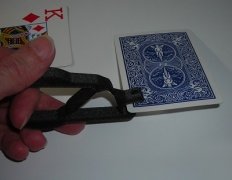 I didn't want the kind you stick to your fingers, which may be good if you are a real gambler. No, I wanted one that you use in private to mark cards for magic or mental magic. This is exactly what I was looking for. I use it all the time and I love it. Great for a key-card. It is a tactile instead of a visual clue.
I didn't want the kind you stick to your fingers, which may be good if you are a real gambler. No, I wanted one that you use in private to mark cards for magic or mental magic. This is exactly what I was looking for. I use it all the time and I love it. Great for a key-card. It is a tactile instead of a visual clue.
Perfected Sealed Message Reading
Overall customer rating: ★★★★★reviewed by Gregg Webb (confirmed purchase)
Rating: ★★★★★ (Date Added: Saturday 30 November, 2024)
 This is a handling of the Q & A envelopes and cards that is very do-able and that you will enjoy using and learning. It was published by Max Holden in 1950 and revamped for today's use. I have read many methods by Annemann and Baker and many others and find this one to have the simplicity needed to make the whole process seem second nature. I highly recommend it.
This is a handling of the Q & A envelopes and cards that is very do-able and that you will enjoy using and learning. It was published by Max Holden in 1950 and revamped for today's use. I have read many methods by Annemann and Baker and many others and find this one to have the simplicity needed to make the whole process seem second nature. I highly recommend it.
Theory of Sequential Decks
Overall customer rating: ★★★★★reviewed by Gregg Webb (confirmed purchase)
Rating: ★★★★★ (Date Added: Saturday 26 October, 2024)
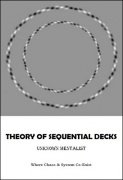 This is very technical writing about kinds of sequences for set-up decks, but given the price I don't see why a cardman wouldn't get it and look it over in case something strikes his fancy. I am a card enthusiast and have tried many systems in my time, and I can see going through this a few times more. Why not? I might learn something. Personally I avoid using true memory although I did the cover art for a number of memorized deck systems, but favor the Bart Harding stack which is a calculation and not a memorization, but I try to keep an open mind about the field. This book explores a number of approaches. Just a false shuffle or false cut and you are a miracle worker. If you do true memory work, you can really even spread the deck face up. I also know a few mnemonic stacks that can be spread face up and don't seem to be in any order, but are. Have fun going through this.
This is very technical writing about kinds of sequences for set-up decks, but given the price I don't see why a cardman wouldn't get it and look it over in case something strikes his fancy. I am a card enthusiast and have tried many systems in my time, and I can see going through this a few times more. Why not? I might learn something. Personally I avoid using true memory although I did the cover art for a number of memorized deck systems, but favor the Bart Harding stack which is a calculation and not a memorization, but I try to keep an open mind about the field. This book explores a number of approaches. Just a false shuffle or false cut and you are a miracle worker. If you do true memory work, you can really even spread the deck face up. I also know a few mnemonic stacks that can be spread face up and don't seem to be in any order, but are. Have fun going through this.
Just Coins!
Overall customer rating: ★★★★★reviewed by Gregg Webb (confirmed purchase)
Rating: ★★★★★ (Date Added: Saturday 26 October, 2024)
 Mr. Malinchock put a great deal of thought into this book. There are also video links provided so you can watch the routines being done, as well as read them. I recommend it highly to any coin lover. His handlings are enough off-beat as to keep your interest even if you are well versed in coin magic. I was a working pro and am now a writer and illustrator about magic, and also a hobbyist. I don't understand the price or lack thereof, but there it is.
Mr. Malinchock put a great deal of thought into this book. There are also video links provided so you can watch the routines being done, as well as read them. I recommend it highly to any coin lover. His handlings are enough off-beat as to keep your interest even if you are well versed in coin magic. I was a working pro and am now a writer and illustrator about magic, and also a hobbyist. I don't understand the price or lack thereof, but there it is.
TCF: Tarot Counting Feint
Overall customer rating: ★★★★★reviewed by Gregg Webb (confirmed purchase)
Rating: ★★★★★ (Date Added: Saturday 21 September, 2024)
 Bob Farmer is on fire. This package is very good, and the force is known but nicely hidden. The presentations are very good with some nice supplied help. I also enjoyed the bonus material. At this price you can't go wrong even if you are the hard to please type.
Bob Farmer is on fire. This package is very good, and the force is known but nicely hidden. The presentations are very good with some nice supplied help. I also enjoyed the bonus material. At this price you can't go wrong even if you are the hard to please type.
Enchanted Ball Manipulation
Overall customer rating: ★★★★★reviewed by Gregg Webb (confirmed purchase)
Rating: ★★★★★ (Date Added: Tuesday 27 August, 2024)
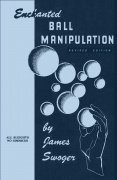 Billiard balls has been my favorite part of magic. I haven't had a new book in a while and this one is great. I know the name James Swoger. The book has a good cross-section of techniques and effects and I like the use of the pockets - a ball penetrates the trousers, etc., and ends up in the pocket because as you bring the one out, you can palm out more to get ahead in your routine. Color changes, vanishes, multiplications, a multiplying routine and a gold ball routine and more. You can't go wrong.
Billiard balls has been my favorite part of magic. I haven't had a new book in a while and this one is great. I know the name James Swoger. The book has a good cross-section of techniques and effects and I like the use of the pockets - a ball penetrates the trousers, etc., and ends up in the pocket because as you bring the one out, you can palm out more to get ahead in your routine. Color changes, vanishes, multiplications, a multiplying routine and a gold ball routine and more. You can't go wrong.
Free Will Switch
Overall customer rating: ★★★★★reviewed by Gregg Webb (confirmed purchase)
Rating: ★★★★★ (Date Added: Monday 24 June, 2024)
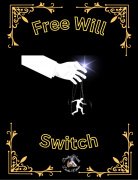 The first person I saw use everyday objects for this was Charles Reynolds, Doug Henning's consultant. Not the dealer item, which used wooden discs with symbols which were marked adding an extra layer of deception. I also heard that it was in Greater Magic. Anyway, this version has a clever handling which favors which item gets left behind during the first choices, and some interesting switches at the end where the spectator can exchange the positions of various items.
The first person I saw use everyday objects for this was Charles Reynolds, Doug Henning's consultant. Not the dealer item, which used wooden discs with symbols which were marked adding an extra layer of deception. I also heard that it was in Greater Magic. Anyway, this version has a clever handling which favors which item gets left behind during the first choices, and some interesting switches at the end where the spectator can exchange the positions of various items.
I have written about this trick several times in my newsletters, but this one is not a bad way to learn the trick. I even came up with a stage version called Freed Will which uses 3 young ladies and a chair and a spectator does the choosing and holds the prediction about who will sit in the chair and who will hold your hand and who will hold the spectator's hand. The chair takes the place of a little box used in Charles Reynolds' version.
I think the objects used are open to more variation. Charles used a little ivory skull, a die, and an unusual old and foreign coin. Why not learn this trick, but feel free to experiment with various items.
ESP Cards with Bicycle Back Marked
Overall customer rating: ★★★★★reviewed by Gregg Webb (confirmed purchase)
Rating: ★★★★★ (Date Added: Friday 24 May, 2024)
 These cards are the best I've seen lately. You get a red backed set and a blue backed set. They are also marked. Include some ESP card effects or "experiments" in your psychic act or set.
These cards are the best I've seen lately. You get a red backed set and a blue backed set. They are also marked. Include some ESP card effects or "experiments" in your psychic act or set.
ESP Card Magic Vol. 2: Nick Trost Part 2
Overall customer rating: ★★★★★reviewed by Gregg Webb (confirmed purchase)
Rating: ★★★★★ (Date Added: Saturday 04 May, 2024)
 This is exactly what I was looking for. Nick Trost was a great name in ideas with regular cards, but also here with ESP cards. And Aldo Colombini is a great name in magic and it is he who delivers the little video teach-ins in this package. This stuff is doable. You'll want this one if you like ESP card routines.
This is exactly what I was looking for. Nick Trost was a great name in ideas with regular cards, but also here with ESP cards. And Aldo Colombini is a great name in magic and it is he who delivers the little video teach-ins in this package. This stuff is doable. You'll want this one if you like ESP card routines.
How to Answer Questions for Crystal Gazing and Mind Reading Acts
Overall customer rating: ★★★★★reviewed by Gregg Webb (confirmed purchase)
Rating: ★★★★★ (Date Added: Sunday 14 April, 2024)
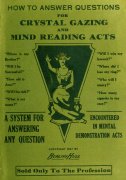 Along with the Bob Cassidy books, and Paul Voodini books I've been reading lately, this book is a very interesting way to take questions and word your answer so that you are giving for your answer something that was hidden in the way the question was worded. Realize that if working for a large audience, as this method was intended, that the vast majority of people won't know exactly how the question was worded. I knew of Hull from his book on billiard balls, and also some card tricks, but this work for mentalists is very well worked out.
Along with the Bob Cassidy books, and Paul Voodini books I've been reading lately, this book is a very interesting way to take questions and word your answer so that you are giving for your answer something that was hidden in the way the question was worded. Realize that if working for a large audience, as this method was intended, that the vast majority of people won't know exactly how the question was worded. I knew of Hull from his book on billiard balls, and also some card tricks, but this work for mentalists is very well worked out.
Pure Q and A
Overall customer rating: ★★★★★reviewed by Gregg Webb (confirmed purchase)
Rating: ★★★★★ (Date Added: Tuesday 09 April, 2024)
 I found this to be the most audacious method and presentation for a Q&A act I've yet read. To pull this off, you'd have to be steeped in this kind of work so as to be able to come up with something to say. The thing is, you are doing just what you claim to be doing...saying what you think and not making any claims that you have to back up. Certain questions you refuse to answer and you tell why...medical issues or lotto numbers etc. The act is divided into 4 parts if I'm not mistaken. Certainly tough to learn, but if you already have the ability to do readings, this is really easier than all the gaffed methods for getting info. And, if you don't know an answer, you just say so, and since you are not claiming true powers, the audience is said to go along with you on this, and don't turn against you. I plan on rereading this and Paul's other books regularly because he has hit upon a very unusual style.
I found this to be the most audacious method and presentation for a Q&A act I've yet read. To pull this off, you'd have to be steeped in this kind of work so as to be able to come up with something to say. The thing is, you are doing just what you claim to be doing...saying what you think and not making any claims that you have to back up. Certain questions you refuse to answer and you tell why...medical issues or lotto numbers etc. The act is divided into 4 parts if I'm not mistaken. Certainly tough to learn, but if you already have the ability to do readings, this is really easier than all the gaffed methods for getting info. And, if you don't know an answer, you just say so, and since you are not claiming true powers, the audience is said to go along with you on this, and don't turn against you. I plan on rereading this and Paul's other books regularly because he has hit upon a very unusual style.
The Book of Black Magic and of Pacts
Overall customer rating: ★★★★★reviewed by Gregg Webb (confirmed purchase)
Rating: ★★★★★ (Date Added: Monday 19 February, 2024)
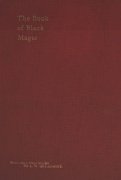 Arthur Waite designed the Tarot deck most people know, and wrote the book most people learn from. Turns out he knows his stuff about demonology too. It looks like all the manuscripts derive from the Keys of Solomon. He has gathered them all and compares and analyzes them all for differences and similarities and he also makes interesting commentaries. The paraphernalia needed for the ceremonies is complicated to make. The wording for the prayers have an unbelievable number of unusual names for god and angels and of course the demons. Names for chemicals in those days were different from what we know today. The artwork is interesting mainly in the sigils and seals needed to control the demons once you call them and again when you put them away. Getting demons to stay away after one is done with them has been a problem as we know from the Faust incident.
Arthur Waite designed the Tarot deck most people know, and wrote the book most people learn from. Turns out he knows his stuff about demonology too. It looks like all the manuscripts derive from the Keys of Solomon. He has gathered them all and compares and analyzes them all for differences and similarities and he also makes interesting commentaries. The paraphernalia needed for the ceremonies is complicated to make. The wording for the prayers have an unbelievable number of unusual names for god and angels and of course the demons. Names for chemicals in those days were different from what we know today. The artwork is interesting mainly in the sigils and seals needed to control the demons once you call them and again when you put them away. Getting demons to stay away after one is done with them has been a problem as we know from the Faust incident.
Comic book and movie fans may know of Hellboy comics and graphic novels and near the end of this work I found where Mike Mignola may have researched and found some of his ideas and also artwork for seals and sigils is his books, as well as "the Hand of Glory". Really near the end is explained how you can resurrect the dead so that you can ask them questions such as where they buried their treasure. This features in at least one Hellboy story. Also interesting among all of the information provided is the construction and use of The Blasting Rod which can be useful for keeping stubborn demons in line. Lovers of bizarre magic should find many patter possibilities here. If you summon demons to work for you, please put them back where they belong when you are done.
Anatomy of Gaming
Overall customer rating: ★★★★★reviewed by Gregg Webb (confirmed purchase)
Rating: ★★★★★ (Date Added: Monday 12 February, 2024)
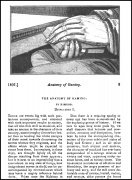 I am interested in Erdnase and hoped to find some words or passages in this book which would indicate that Erdnase also read it, and I did in a few places. But, all in all Anatomy of Gambling by Nimrod is not an interesting book. Probably written for a magazine at the time, in installments, it is very old British and includes very verbose wordage. While I like Erdnase's use of interesting words, here Nimrod goes overboard. He is basically explaining how bad gambling is for society, what with the loss of wealthy people's entire fortunes and estates, and suicides and duels fought because of losses from it, but he uses every word he can think of rather than get to the point. If one is looking for many many words to construct a simple thought, then this is the book for you.
I am interested in Erdnase and hoped to find some words or passages in this book which would indicate that Erdnase also read it, and I did in a few places. But, all in all Anatomy of Gambling by Nimrod is not an interesting book. Probably written for a magazine at the time, in installments, it is very old British and includes very verbose wordage. While I like Erdnase's use of interesting words, here Nimrod goes overboard. He is basically explaining how bad gambling is for society, what with the loss of wealthy people's entire fortunes and estates, and suicides and duels fought because of losses from it, but he uses every word he can think of rather than get to the point. If one is looking for many many words to construct a simple thought, then this is the book for you.
While Erdnase, and under another pseudonym for himself, Eugene Edwards in the newspaper stories and book Jack Pots, as well as Maskelyne's and Houdin's books on gambling, show how words can be used in an interesting way, I found Nimrod to be overly loquacious and I found myself wondering if he was a lawyer expecting to be paid by the word.
While I'll probably finish it, I wanted to report how tedious a read it is.
Cold Reading Lecture 2012
Overall customer rating: ★★★★★reviewed by Gregg Webb (confirmed purchase)
Rating: ★★★★★ (Date Added: Sunday 04 February, 2024)
 I was actually looking for Herb Dewey books but I found this instead and am very glad I did. It is a wonderful lecture and I learned what I was looking for in my hunt for real info on this subject. If you are interested in readings or mentalism or psychology, I would highly recommend this download.
I was actually looking for Herb Dewey books but I found this instead and am very glad I did. It is a wonderful lecture and I learned what I was looking for in my hunt for real info on this subject. If you are interested in readings or mentalism or psychology, I would highly recommend this download.
Psycho-Mentisis
Overall customer rating: ★★★★★reviewed by Gregg Webb (confirmed purchase)
Rating: ★★★★★ (Date Added: Monday 29 January, 2024)
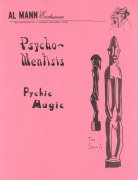 Slightly bizarre. Be aware that Al Mann's manuscripts have a very low production value, and the ideas may seem to not be practical at first read, you may find some things of interest after all. There are some items that need to be made and then worked with to get the knack, such as a switching device made of a wallet with a magnet. Paper clips seem to link, and end up really linked, due to a magnetized chain of paper clips switched for paper clips that really are linked. A similar thing with safety pins. He mixes in Jerry Andrus's idea also. A similar thing with nails that bend and some that just seem to bend but are really switched with sleight-of-hand. Then there are some really odd things with bringing bugs back to life. Finally, a dancing doll that is probably workable if you get the required strange magnets...possibly at a hobby store. The real bonus is that Bob McAllister's wonderful levitation Walking On Air, which Bob used to perform everywhere and anywhere, is explained here, except for a few technical improvements and the ability to get all the parts on Canal Street which is where Bob got all his from. All the tricks read as terrible ideas, but if you can figure out what he's actually talking about...you could revive Metal Bending and Bob McAllister's Walking On Air if you study this and read the Ads for Bob's version. Some may dislike the book and a few and far between readers may like it, or parts of it.
Slightly bizarre. Be aware that Al Mann's manuscripts have a very low production value, and the ideas may seem to not be practical at first read, you may find some things of interest after all. There are some items that need to be made and then worked with to get the knack, such as a switching device made of a wallet with a magnet. Paper clips seem to link, and end up really linked, due to a magnetized chain of paper clips switched for paper clips that really are linked. A similar thing with safety pins. He mixes in Jerry Andrus's idea also. A similar thing with nails that bend and some that just seem to bend but are really switched with sleight-of-hand. Then there are some really odd things with bringing bugs back to life. Finally, a dancing doll that is probably workable if you get the required strange magnets...possibly at a hobby store. The real bonus is that Bob McAllister's wonderful levitation Walking On Air, which Bob used to perform everywhere and anywhere, is explained here, except for a few technical improvements and the ability to get all the parts on Canal Street which is where Bob got all his from. All the tricks read as terrible ideas, but if you can figure out what he's actually talking about...you could revive Metal Bending and Bob McAllister's Walking On Air if you study this and read the Ads for Bob's version. Some may dislike the book and a few and far between readers may like it, or parts of it.
Card Sharping Exposed
Overall customer rating: ★★★★★reviewed by Gregg Webb (confirmed purchase)
Rating: ★★★★★ (Date Added: Sunday 21 January, 2024)
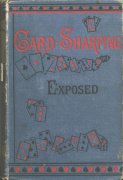 Because of my interest in Erdnase, I read the earlier books on card sharping that I could find. I found one in German, Mysterien des Kartenspiel, and feel it is a blueprint for other works, but then I read Maskelyne's book Sharps and Flats, which I felt was very well written. Next, I read this one, by Houdin and translated by Prof. Hoffman, which I now feel came before the Maskelyne book, and which is even more well written. It starts with some storytelling about the world of the crooked gamblers and swindlers, and then tells some info I never read before about details on thimble rigging.
Because of my interest in Erdnase, I read the earlier books on card sharping that I could find. I found one in German, Mysterien des Kartenspiel, and feel it is a blueprint for other works, but then I read Maskelyne's book Sharps and Flats, which I felt was very well written. Next, I read this one, by Houdin and translated by Prof. Hoffman, which I now feel came before the Maskelyne book, and which is even more well written. It starts with some storytelling about the world of the crooked gamblers and swindlers, and then tells some info I never read before about details on thimble rigging.
But then, it segues into the telling of the life story of the man who served as Houdin's source of information about cheating at cards. The entire subculture of the gangs of crooked gamblers is explored in great detail. A whole event is set up with crooks acting out the roles of other players, police, foreign dignitaries, ladies who watch and kibitz on the games and people who mingle and give signals, all to wipe out one sitting duck by what would be seen as a play put on in real life. This is very interestingly written about. Many examples of variations on the theme of setting up a patsy are described. This could be considered what is probably the best explanation of what happens long before the actual game begins that I have read. Again, a whole crew with costumes and roles to play are involved.
Then, the second main part of the book goes into technical details of cheating techniques and "moves" as well as marked cards, and crimps and trimmed cards such as strippers are described. Various shuffles and palming methods and passes are described.
A comparison could be made that Erdnase is better technically at describing cheating methods. Houdin's is better at the storytelling nature of the cheater subculture of that time in France. If you believe that Erdnase also wrote Jack Pots under a different pseudonym, that book could be compared to the first part of the Houdin book and is made up of stories about and the life of traveling gamblers in America.
It should be pointed out that poker was not played in France at the time of Houdin.
All in all this book goes deeper into how all the people at a gambling venue may be involved in the scam, and how they coordinate. Remember the line, "If you don't know who is the patsy in a poker game, YOU are the patsy" but applied to whist, piquet, Baccarat, etc. I enjoyed the read.
The Real Work of Cold Reading
Overall customer rating: ★★★★★reviewed by Gregg Webb (confirmed purchase)
Rating: ★★★★★ (Date Added: Thursday 11 January, 2024)
 Bob Cassidy, who stands for no malarky, writes exactly what he thinks in a field where some are trying to be deceptive and some just don't know what they are talking about. And, yet, in real life, when he was alive, he was very pleasant to talk to. He has read everything on the subjects he writes about. When he explains something, I "get it" when with others I don't, often. He even goes so far as to print what some known authority has said about a particular issue and then goes on to correct or clarify about what they got wrong or were off by "a miss is as good as a mile". In this field of cold reading, and you get the impression that he did readings a lot, besides his shows and demonstrations, he ties in how this can augment Tarot reading or palm readings, or astrology.
Bob Cassidy, who stands for no malarky, writes exactly what he thinks in a field where some are trying to be deceptive and some just don't know what they are talking about. And, yet, in real life, when he was alive, he was very pleasant to talk to. He has read everything on the subjects he writes about. When he explains something, I "get it" when with others I don't, often. He even goes so far as to print what some known authority has said about a particular issue and then goes on to correct or clarify about what they got wrong or were off by "a miss is as good as a mile". In this field of cold reading, and you get the impression that he did readings a lot, besides his shows and demonstrations, he ties in how this can augment Tarot reading or palm readings, or astrology.
He mentions his friend Herb Dewey who gave us so much info that we use today, and what he thought about certain aspects of this field. After mastering this, you'll not need trickery, although he does go into ways to use it to show something more spectacular yet near the end of a reading. Finally he gives some valuable info in the Appendix. I feel this is the best book I have ever read on a field which always left me somewhat confused.
Sharps and Flats: A Complete Revelation of The Secrets of Cheating at Games of Chance and Skill
Overall customer rating: ★★★★★reviewed by Gregg Webb (confirmed purchase)
Rating: ★★★★★ (Date Added: Tuesday 19 December, 2023)
 This book by John Nevil Maskelyne with help from at least one expert on crooked gambling is very well written. This may be the best writing in a "magic" book I've yet found. I'm talking about just the writing itself being entertaining, but I have yet to describe the material covered. My personal opinion is that he was aware of German books about cheating at gambling, and felt he could write a similar book in English and at the same time make it more complete.
This book by John Nevil Maskelyne with help from at least one expert on crooked gambling is very well written. This may be the best writing in a "magic" book I've yet found. I'm talking about just the writing itself being entertaining, but I have yet to describe the material covered. My personal opinion is that he was aware of German books about cheating at gambling, and felt he could write a similar book in English and at the same time make it more complete.
A good place to start is with Monte on trains and at the race track. Then he covers some bar bets, and gambling that went on in bars, usually with several "sharps" beating an honest bystander or tourist. Odd Man Out is a game based on spinning coins. The coins used by the swindlers were beveled on the edges to make them fall a certain way. "Spinning Coins" were sold at Tannen's at one time. Now I know what Odd Man Out means.
Moving along to cards, and marked cards were covered very well. There were many ways explained. Fading and tinting were interesting ways to mark cards. A very interesting story was recounted from Houdin where a gambler bought a zillion decks of cards, marked them all, rewrapped them and then sold them to casinos. Then he could go and play at the casinos and the cards were already marked. Then, another gambler was going to do the same thing and bought a number of decks from the casino and was going to mark them, but noticed they were already marked! Eventually he figured out who did it. He blackmailed the other guy for a while, but when the marked cards ran out, the first guy left the country and left the 2nd guy holding the bag. The story was very well told.
Devices were explained next. Different kinds of shiners and bugs and hold-outs were explained in great detail, including the Kepplinger Holdout.
Then manipulations of playing cards were explained and this part was not as well explained as in Erdnase. The grips used were antiquated. An overhand shuffle was done from left to right. There was a way to "mix" cards which I would say was like a left hand and right hand action version of a Charlier Shuffle. A way to run up a hand was explained using this shuffle. Cuts and passes were explained but although interesting from a history's perspective, were not as modern as Erdnase, again. But, one thing covered that was not covered in Erdnase was Riffle-stacking.
Next was covered Faro and all the ways that it can be rigged. It seems as if the rough-and-smooth principle came from Faro. The Faro Shuffle also came from Faro. Dealing was done out of an expensive "box" or shoe or boot and due to the cards "roughed" by rubbing them with sand - actually emery cloth, either cards could be dealt as 2 "stuck" together, and allowed out of the box, to go to the discard pile, or 1 card could be dealt. Cards could be marked, or cut at an odd angle and be told by the mechanic. The whole Faro process was rigged in favor of the house.
Next, all the various ways to trim cards with different kinds of cutters, were explained. Other ways to doctor cards were also explained, including the chemical compounds used to create "slick aces" were rendered for our approval. This way, by pushing laterally on the deck, a bigger gap forms at the aces, and here is where you would cut or pass.
Moving from cards to dice, loaded dice and mis spotted dice were explained as well as electric dice, with electro-magnets in the table, what we called "juice-joints". Then manipulations were described using normal dice and dice cups and crooked dice and dice cups were explained, and in relation to many dice games. Realize that Poker or Craps were not popular in England at that time.
Next, a game I don't know, High Ball Poker, was covered which used a leather bottle and balls with numbers on them.
Then Roulette was explained and the many ways attempted to cheat at it explored.
Finally, a catalog of what are referred to as Sporting Goods (really cheating apparatus) was reproduced for the approval of the reader.
By-the-way, at the end of the cards section, Maskelyne explains a way to cheat and not get caught wherein the "sharp" memorizes as many cards as he can at the end of a hand and as the cards are gathered up. Through memory and estimation, he "follows" or tries to follow where these cards would end up after the person shuffling and the person cutting, were done. Skill at this feat was explained as if some people could get good at this way of being a sharp and not getting in trouble.
I would recommend this book on style points, and on historical points.
Samuel Cox Hooker and his Rising Cards
Overall customer rating: ★★★★★reviewed by Gregg Webb (confirmed purchase)
Rating: ★★★★★ (Date Added: Wednesday 06 December, 2023)
 Dr. Wasshuber's book is a fascinating look at the great mystery of how a deck of cards in a houlette which is sometimes out in plain view and other times covered by a glass bell jar and at other times suspended by ribbons, can have called for cards rise from it. At other times the said cards rise above the houlette.
Dr. Wasshuber's book is a fascinating look at the great mystery of how a deck of cards in a houlette which is sometimes out in plain view and other times covered by a glass bell jar and at other times suspended by ribbons, can have called for cards rise from it. At other times the said cards rise above the houlette.
Along with the card rising tricks, there is a teddy-bear's head that nods and shakes the head in response to questions. Then it rises in the air as mysteriously as with the card rises.
Only a handful of people know how the effect was really done. It was not a public show. It was built into a house of Hooker, the scientist and magician, and done to fool magicians. When John Gaughn and Jim Steinmeyer recreated it by permission from the estate, they were sworn to secrecy. We are assured that 2 people were probably backstage assistants - hidden assistants. It is one piece of modern folklore that John Mulholland as a young lad was one of these assistants.
Dr. Wasshuber takes us through the earlier history of the trick. Some versions of rising cards would be actually better for the public showing of this effect, since the show would have to travel from stage to stage and the version built into Hooker's house was not portable. Then Dr. Wasshuber built various working models of the various attempts at recreating parts of the effect. His final conclusions are really that there were new technologies just emerging at the time that helped fool the magicians present in the audience. Another of his hypotheses is that multiple methods were used for the different versions of the basic effect of cards rising based on if a deck was supplied, or borrowed, and cards selected or called for.
One thing that is interesting is the seating arrangement that was strictly controlled so that only certain lines of sight were allowed. All we truly know are from careful notes taken during the earlier versions, and then during the recreation of the show. So, while only a few people really know, I was always interested in this trick, yet didn't even know what went on during the trick, which gave it such a legendary reputation.
Dr. Wasshuber is both a scientist and a magician, and his book is an intriguing look at this mystery, and I'm glad I read it. I'm sure that one of the methods explored is the correct one or close to it, and I learned a lot of earlier methods, and got to watch a puzzle of both a scientific and a magical mystery being dissected.
Illustrierte Magische Bibliothek: Band 5: Das Buch der Kartenkunststücke
Overall customer rating: ★★★★★reviewed by Gregg Webb (confirmed purchase)
Rating: ★★★★★ (Date Added: Tuesday 14 November, 2023)
 Now that I realize that Erdnase was bilingual and spoke and could write in German, I have been interested in looking into the books on magic and gambling and cheating that would have been available to Erdnase when he lived in Chicago, from Roterberg's Magic Shop. Roterberg's would have carried these as well as magazines and also magic apparatus.
Now that I realize that Erdnase was bilingual and spoke and could write in German, I have been interested in looking into the books on magic and gambling and cheating that would have been available to Erdnase when he lived in Chicago, from Roterberg's Magic Shop. Roterberg's would have carried these as well as magazines and also magic apparatus.
Willmann considered his teachings about cards to be a complete school unto itself. Anyone who switched the Aces to the Queens for a card trick was certainly making a statement for the history books. That way the patter could be more interesting and amusing.
The translating ability of Lybrary.com is very interesting in itself, and easy to use. You only have to hit a "translate" button after each turn of the page. Said button is near the page-turning button. You only have to select what language you want, I chose English, but there are many many offered. I must say that I felt like I was getting into multi-cultural research to use this feature. I recommend it.
I also recommend looking into the German connection for those interested in Erdnase and The Expert at the Card Table.
The Expert at the Card Table
Overall customer rating: ★★★★★reviewed by Gregg Webb (confirmed purchase)
Rating: ★★★★★ (Date Added: Tuesday 14 November, 2023)
 I am an author and innovator of card tricks and routines as well as other sleight-of-hand interests and have been reading Dr. Chris Wasshuber's book about Erdnase. In my teens I had the Expert almost memorized but switched to other newer techniques. Since reading the book about Edward Gallaway as the probable author of The Expert, I decided to revisit the section on the running up of hands with the jog shuffle and to study the math involved again.
I am an author and innovator of card tricks and routines as well as other sleight-of-hand interests and have been reading Dr. Chris Wasshuber's book about Erdnase. In my teens I had the Expert almost memorized but switched to other newer techniques. Since reading the book about Edward Gallaway as the probable author of The Expert, I decided to revisit the section on the running up of hands with the jog shuffle and to study the math involved again.
Also after reading Jack Pots, written probably by Erdnase, and about stories of poker players and poker games, I am now realizing that even the introduction to The Expert, and onward, are truly written by someone who was there and knew for sure what was going on. Jack Pots was written by Eugene Edwards, which is surely a pseudonym of Erdnase (Edward Gallaway). I now realize why Dai Vernon was so enthused by The Expert.
The German language connection of The Expert has caused me to also look into the German books and magazines about magic and cheating at cards just before the turn of the last century.
As it turns out, at least 6 of the card tricks in the second section of The Expert are borrowed from German books and magazines by Willmann and Conradi to mention two.
And so The Expert is valuable on many levels and more than the sum of its parts. History, brilliant writing, and word usage, in addition to the "moves" and strategies in the book, all run through the man nicknamed Erdnase.
The Cardsharp and his Book
Overall customer rating: ★★★★★reviewed by Gregg Webb (confirmed purchase)
Rating: ★★★★★ (Date Added: Friday 10 November, 2023)
 I am an author and Lybrary.com publishes and carries my eBooks. Doctor Wasshuber mentioned to me in passing that he was interested in the Erdnase mystery and that he felt the evidence for Edward Gallaway being Erdnase was overwhelming. He mentioned that he had written a book about it. I proceeded to obtain the book, The Cardsharp and his Book, and read it. Although the section on forensic studies of the language used is difficult to wade through at first, and necessarily so, in the end is convincing when you understand how the science works.
I am an author and Lybrary.com publishes and carries my eBooks. Doctor Wasshuber mentioned to me in passing that he was interested in the Erdnase mystery and that he felt the evidence for Edward Gallaway being Erdnase was overwhelming. He mentioned that he had written a book about it. I proceeded to obtain the book, The Cardsharp and his Book, and read it. Although the section on forensic studies of the language used is difficult to wade through at first, and necessarily so, in the end is convincing when you understand how the science works.
There are other aspects of the book that are of a different nature, and to me, they were even more visceral and compelling in a down-to-earth way. I'm referring to the biographical facts about the man in question. He is fluent in German and English and wrote for German-American newspapers and English-speaking newspapers.
He also worked in the printing industry. He took time off to travel and gamble and he took time off to perform magic in a circus. Both activities put a deck of cards in his hands for both gambling at poker and doing magic. Interestingly, concerning printing, he worked for the company that printed the Erdnase book! In a book on printing that he wrote, there are photos where you can see the same unusual hands which we see what are surely tracings of, in the Expert. There are art experts who feel that the illustrations in Erdnase are done from photos. Also, in a book on printing, Edward Gallaway is seen doing card manipulations with thin 4" rulers found in printing schools.
Returning to writing, Gallaway wrote newspaper stories about poker games which were compiled into a book called Jack Pots: Stories of the Great American Game. The book was written, supposedly, by Eugene Edwards, which is a pseudonym of Gallaway's. In it, you find out how he got to know so much about poker from traveling and gambling. And, you see what a great writer he was. This is not a textbook. It is a storybook and has humor irony and pathos and fascinating uses of interesting words and dialects. Houdini's copy of Jack Pots is in the Library of Congress complete with his handwritten notes in the margin. Another link to greatness is the fact that Jack Pots is illustrated by Ike Morgan who also illustrated Frank Baum's Wizard of Oz!
Many of the other contenders for the authorship of the Expert have Andrews as their name. Andrews spelled backwards, etc. Well, Gallaway's great aunt was an Andrews, and his favorite author was an Andrew. Getting back to the German language connection, when in Chicago Gallaway lived across from Roterberg's Magic Shop. German magic books and magic apparatus were very good at this time. Gallaway would have been able to read German language magic books. At least 1 trick in Erdnase, The Three Aces trick, is from a German book. There were also at least several books on cheating at cards in German, at this time. After reading these, he probably concluded that he could improve on them, and write in English, but still use them as a blueprint.
Another interesting thing is that Gallaway went to a school growing up that specialized in speed drills for math. This would have helped him with his estimating of the price for a printing job but it would have also have helped when using his original system to run up hands for differing amounts of players and differing amounts of cards. Not everyone could do the math in their heads, but he could.
In conclusion, Erdnase is a nickname for a boy in the German language. Dirty Nose would indicate a boy who was so active outside as to be always a bit dirty. Perhaps Erdnase is actually his childhood nickname. His German language nickname.